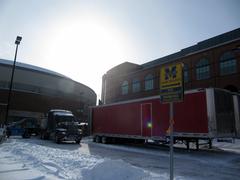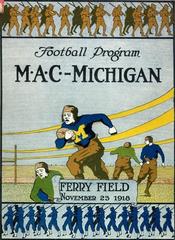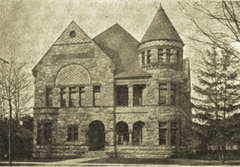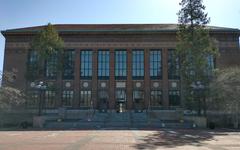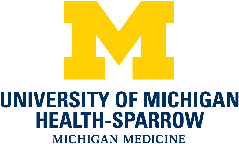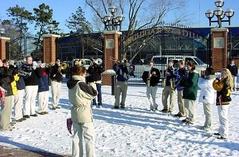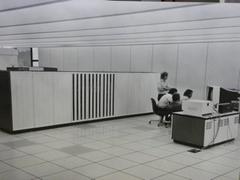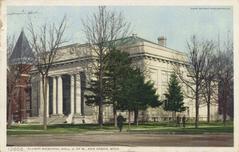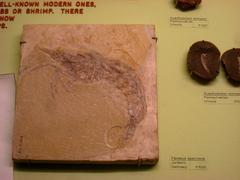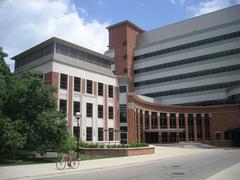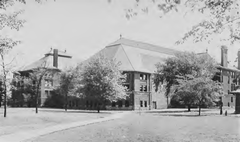Martha Cook Building Visiting Hours, Tickets, and Historical Significance in Ann Arbor
Date: 04/07/2025
Introduction
The Martha Cook Building, located on the University of Michigan’s central campus in Ann Arbor, is a remarkable example of early 20th-century collegiate architecture and a testament to the progress of women in higher education. Established in 1915 as Michigan’s first women’s dormitory, Martha Cook was funded by alumnus William W. Cook in honor of his mother, Martha Walford Cook. Its architectural splendor and enduring traditions have made it both a beloved residence and a significant historic site for visitors interested in Ann Arbor’s rich past.
This guide offers a comprehensive overview for prospective visitors, including details on visiting hours, ticketing, accessibility, building history, and nearby attractions. Whether you are a history enthusiast, a prospective student, or simply exploring Ann Arbor, this article will help you make the most of your experience at Martha Cook.
Table of Contents
- Origins and Founding Vision
- Architectural Significance
- Student Life and Traditions
- Cultural and Social Impact
- Preservation and Modernization
- Visiting: Hours, Tickets, and Tours
- Accessibility and Travel Tips
- Nearby Attractions
- Frequently Asked Questions (FAQ)
- Conclusion
- Sources
Origins and Founding Vision
The Martha Cook Building stands as a pioneering effort in the advancement of women’s education at the University of Michigan. William W. Cook, a prominent lawyer and Michigan alumnus, began funding the building in 1911. He required that the university provide land and utilities, with all subsequent income reinvested for the benefit of women residents and governance by a board of women. The building officially opened in September 1915, originally housing about 110 women and representing a progressive model for self-governance and community (Bentley Historical Library, Wikipedia).
Architectural Significance
Designed by York and Sawyer, a renowned New York architectural firm, the Martha Cook Building is celebrated for its harmonious blend of Tudor Gothic and early Renaissance styles. The exterior features red brick and limestone, battlemented roofs, pointed arches, traceried windows, and ornate gargoyles. Its entrance, crowned by a statue of Portia from Shakespeare’s “The Merchant of Venice,” is a striking focal point (HMDB Marker).
Inside, visitors will find wood-paneled rooms, groin-vaulted hallways, and significant artifacts such as a full-sized marble Venus de Milo replica and a 1913 Steinway piano. The Red and Gold Rooms connect through a paneled alcove, showcasing historic tapestries and artworks that reflect the building’s storied past (HMDB Marker).
Student Life and Traditions
From its inception, Martha Cook fostered a vibrant, supportive community. Residents could stay throughout their undergraduate and graduate years, which was unique at the time. Traditions such as the weekly Friday Tea in the Gold Room, formal Sunday dinners, and themed events established a strong sense of camaraderie and continuity among residents, affectionately known as “Cookies” (Martha Cook History). These rituals remain integral to the Martha Cook spirit.
Cultural and Social Impact
Martha Cook’s creation coincided with a period of expanding opportunities for women in academia and society. By establishing a women-governed, self-sustaining residence, the building became a model for student agency and empowerment. Over the decades, Martha Cook has adapted to changing times, maintaining its commitment to inclusivity and tradition while welcoming a diverse community (U-M Tour Site, Bentley Historical Library).
Preservation and Modernization
Despite its age, the Martha Cook Building retains much of its original charm. Careful renovations have ensured that historic features—such as the groin-vaulted hallways, marble statues, and period furnishings—are preserved, while updates to kitchenettes, laundry rooms, and accessibility features have brought the building up to modern standards. The gardens and tennis court, established in the early years, continue to provide tranquil spaces for recreation and reflection (Martha Cook Visit, Evendo).
Visiting: Hours, Tickets, and Tours
Visiting Hours
The Martha Cook Building is a private residence for undergraduate and graduate women, and as such, public access is limited. Interior tours are available by appointment on select weekdays during the academic year. Public open houses and special events occur periodically but are not regularly scheduled.
Tickets and Admission
- Admission: Free of charge; however, advance booking is required due to privacy considerations.
- Guided Tours: Typically last 30–45 minutes and offer historical and architectural insights. Group and alumni tours may be arranged with prior notice.
- How to Book: Visit the official Martha Cook Visit page or contact the administration directly for current scheduling and policies.
Accessibility and Travel Tips
- Accessibility: The building has made significant improvements but, as a historic structure, some areas may have limited wheelchair access. Staff can assist with alternative arrangements upon request (UMich Housing Accessibility).
- Location: 906 South University Avenue, Ann Arbor, MI 48109, within walking distance of campus landmarks such as the Law Quad and the Michigan Union.
- Getting There: Accessible via Ann Arbor’s TheRide public bus system, walking, or by car. Public parking is available at Forest Avenue and South Forest parking structures.
- Visitor Etiquette: As a residence hall, interior photography is permitted only during special events or with explicit permission. Please respect the privacy and security of residents at all times.
Nearby Attractions
Martha Cook’s central campus location makes it an ideal part of a broader exploration of Ann Arbor’s historic sites:
- University of Michigan Museum of Art (UMMA)
- The Law Quadrangle
- The Diag and Michigan Union
- Graffiti Alley (Michael Visits All)
- Local cafés and restaurants along South University Avenue and State Street
For more information about Ann Arbor attractions, see the Ann Arbor Historical Sites Guide.
Frequently Asked Questions (FAQ)
Q: What are Martha Cook’s visiting hours?
A: Tours are available by appointment during select weekdays. There are no regular public visiting hours.
Q: Is there an admission fee?
A: No, tours are free but require advance reservation.
Q: Are guided tours available?
A: Yes, by appointment, usually lasting 30–45 minutes.
Q: Is the building wheelchair accessible?
A: Many areas are accessible, though some historic spaces may be limited. Contact ahead for accommodations.
Q: Can I visit the gardens?
A: The gardens are visible from public areas and open during special events.
Q: Is interior photography allowed?
A: Only during public events or with staff permission.
Q: Where can I park?
A: Nearby parking structures are located on Forest Avenue and South Forest.
Conclusion
The Martha Cook Building is more than a residence hall—it is a living symbol of women’s advancement, academic tradition, and architectural beauty at the University of Michigan. While access is limited, arranging a tour or attending a public event offers an invaluable window into its storied history and vibrant community. Plan your visit in advance, explore nearby campus attractions, and immerse yourself in the enduring legacy of this Ann Arbor landmark.
For the latest information on tours, events, and accessibility, consult the official Martha Cook Building resources and consider downloading the Audiala app for guided tours and updates.
Sources
- Bentley Historical Library
- Martha Cook Official Site
- University of Michigan Campus Tour
- Wikipedia: Martha Cook Building
- Michigan Historical Marker
- Ann Arbor Historical Sites Guide
- Martha Cook History
- Martha Cook Alumnae Association
- UMich Housing Accessibility
- Evendo: Martha Cook
- Michael Visits All
- Ann Arbor with Kids - Dorm Move-In Tips
- University of Michigan Housing Events Calendar
